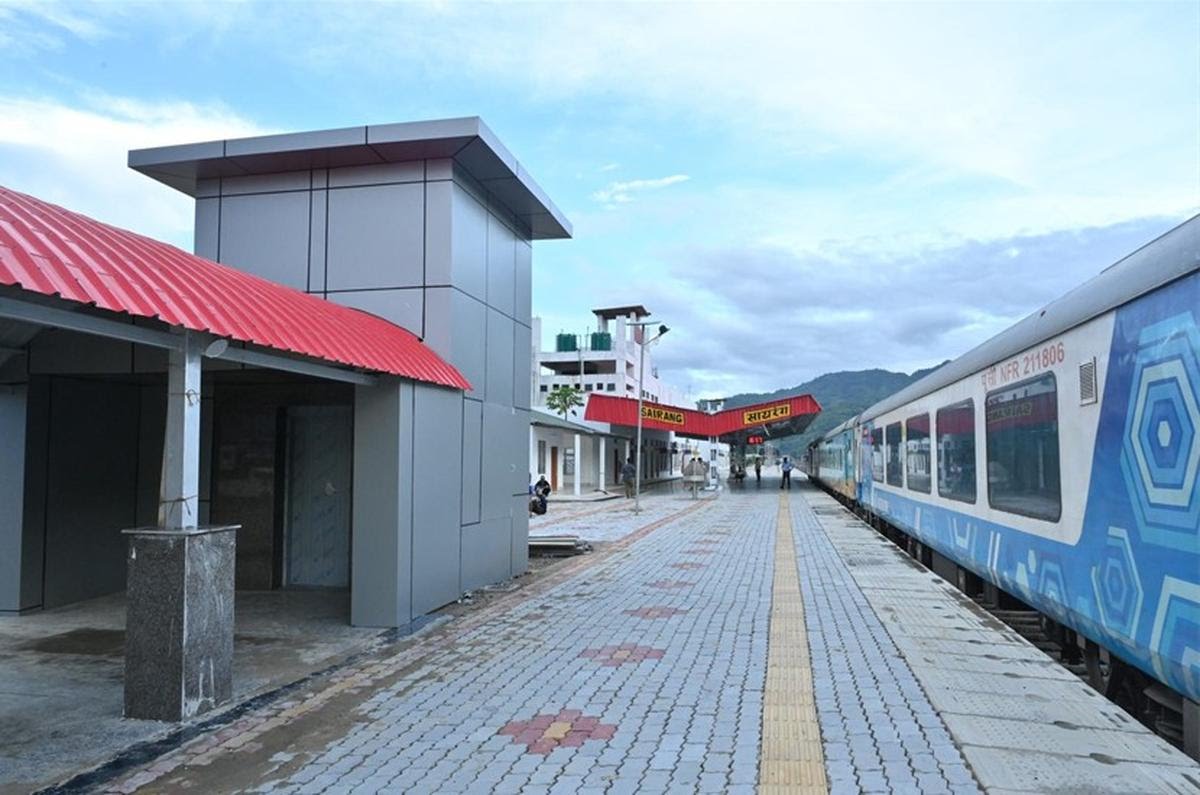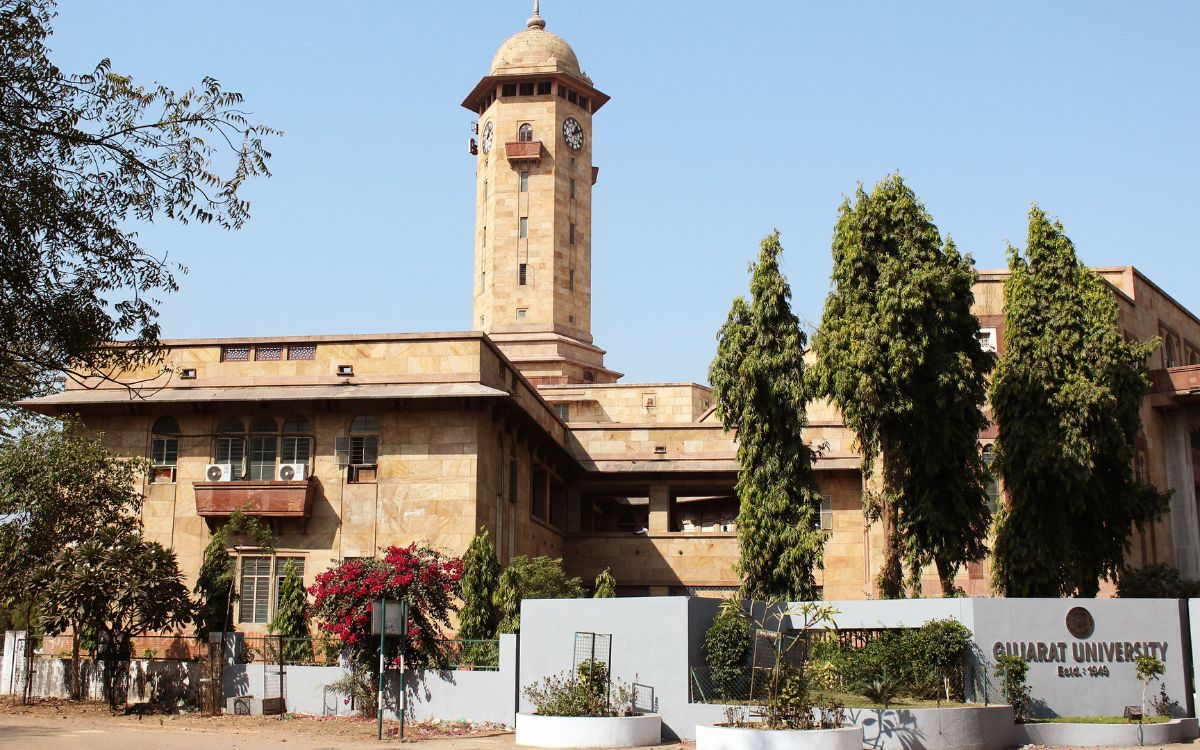Mizoram has finally connected to India’s vast rail grid, an event marked by the inaugural run of passenger and freight services from Sairang. The launch of a Rajdhani Express to Delhi and new routes to major eastern cities signals a new era of mobility for the state. With freight operations starting immediately, the state anticipates a significant drop in logistics costs that could reshape its economic landscape and daily life for its citizens.
The historic Bairabi to Sairang broad gauge line was officially inaugurated on September 13, 2025, effectively placing Aizawl on the national railway map. From Sairang, located just a dozen kilometres from the capital, the state’s very first Rajdhani Express departed for Delhi, while other express services to Guwahati and Kolkata also commenced.
This development is not just about passenger travel. Freight services are set to begin right away, aiming to lower the prices of bulky goods and ensure more reliable supply chains in the hilly state.
This new rail link promises to unlock cheaper and more consistent transport for essential items like food grains, fertilisers and household goods into Mizoram. At the same time, it creates a vital channel for local products such as fruits, flowers and organic produce to reach national markets.
Also Read: Franklin Graham to visit Nagaland over 50 years after father’s crusade
This improved connectivity is expected to enhance access to education and healthcare, boost tourism and drastically reduce travel times through the state’s difficult mountainous terrain which has long kept communities isolated.
The 51.38 kilometre route, built at a cost of over ₹8,000 crore, is an impressive feat of engineering. It navigates through challenging hills and gorges with numerous tunnels and bridges. A standout feature is a pier bridge towering over 100 metres high. The line connects Bairabi on the Assam border to Sairang, providing road access to Aizawl and establishing new stations at Hortoki, Kawnpui and Mualkhang. This extends connectivity to smaller communities along the new corridor.
Opportunity: Lower prices, wider markets and new mobility
The introduction of freight rail will deliver immediate savings on construction materials like cement and steel, which are fundamental to building homes, roads and supporting small businesses. This cost reduction will also stabilise supplies during the monsoon season when landslides frequently disrupt road traffic.
Both government projects and household budgets could benefit from more predictable construction and retail prices for essential goods.
For local farmers and producers, scheduled freight trains open up reliable export channels. Perishable goods like ginger, flowers and unique fruits such as dragon fruit can now be shipped in larger, time sensitive consignments. This new logistical capability empowers farmer groups to secure better prices, receive predictable payments and connect with new buyers well beyond the Northeast region.
The new rail services also prioritise people’s mobility and access to opportunities outside the state. The weekly Rajdhani Express offers a direct link to Delhi for students, patients and workers, with convenient stops in Assam, North Bengal, Bihar and Uttar Pradesh.
Furthermore, the new train routes to Guwahati and Kolkata expand access to universities, specialist hospitals and regional markets, strengthening economic and cultural ties across eastern India.
Also Read: Lucas Akins kept in Mansfield squad despite prison sentence
Pressure: Culture, capacity and social strain risks
An influx of people into Mizoram’s tribal majority regions raises valid concerns about potential strain on customary institutions and cultural cohesion. If protections for land and identity are not robust, an increase in migration could diminish the community’s voice in local decision making, particularly if outside agents come to dominate the labour market. While not inevitable, these risks escalate when population shifts outpace the capacity of local governance and community safeguards.
Increased migration can also lead to heightened competition for jobs, housing and public services. This could create social tension, especially in areas where safety nets are inadequate and enforcement against labour exploitation or discrimination is weak.
Hill states like Mizoram, where urban services and policing are still developing to meet new demands, face more acute pressure from these rapid demographic and economic changes.
While official briefings have focused on prosperity and logistics, the broader security implications of enhanced connectivity cannot be ignored. The railway itself does not directly cause irregular cross border movements, but its management requires diligent border control, identity verification and strict labour enforcement. Any major leap in connectivity necessitates close coordination among various security and administrative agencies to manage potential risks effectively.
Also Read: Six new online degrees introduced by Gujarat University with free IKS
What mitigation would look like now
To counter potential negative impacts, it is crucial to strengthen recognition of customary land rights and uphold local hiring preferences through station area plans and contracts. Ensuring community representation in project development is also vital, allowing residents to actively shape growth rather than absorb it passively. This approach helps preserve local identity and autonomy in the face of rapid change.
Enforcing fair labour standards for all contractors and regulating intermediaries is essential for worker protection. Supporting producer collectives and self help groups will empower local farmers and artisans to capture more value from the new freight opportunities.
Expanding portable social benefits can help reduce cycles of informal exploitation for both local residents and lawful migrant workers, ensuring that economic gains are shared more equitably.
Proactive urban planning is necessary to manage the growth triggered by the railway. This includes developing housing, water supply, sanitation and public transport near stations to prevent uncontrolled sprawl and informal settlements.
Building disaster resilience into the roads and slopes along the railway alignment is critical for managing monsoon landslides and heavy rainfall that could disrupt train services and feeder routes.
Mizoram’s first trains bring the promise of lower prices, faster travel and broader access to national markets. However, realising these benefits will depend on whether cultural safeguards, fair labour regulations and urban services can evolve in step with the new flows of people and goods. Through proactive governance and inclusive planning, the state has the opportunity to harness growth while protecting its unique identity and social cohesion.




